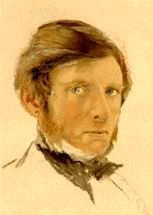 During my daily noodle through the New York Times, I ran across a terrific series in their Opinionator segment. It's called "Line By Line," written by James McMullan, and is "about rediscovering the lost skill and singular pleasure of drawing."
During my daily noodle through the New York Times, I ran across a terrific series in their Opinionator segment. It's called "Line By Line," written by James McMullan, and is "about rediscovering the lost skill and singular pleasure of drawing."
The first installment, "Getting Back to the Phantom Skill" (September 10, 2010) discusses why he embarked on the twelve-part series, and introduces his plan. Scattered throughout the columns are examples from art history that show how skills develop and how artists have used them in the past. The series ended last December with "The Road to the Ten Unknowns," about McMullan's creation of a theater poster.
 This is about the best informal art course I've seen since I came across John Ruskin's Elements of Drawing a few years back, and has reminded me to reorder it (an overly enthusiastic student apparently couldn't resist the temptation and pinched my copy). Ruskin was not only an art critic and supporter of both Turner and the Pre-Raphaelite Brotherhood, but taught drawing at the school he founded at Oxford in 1841.
This is about the best informal art course I've seen since I came across John Ruskin's Elements of Drawing a few years back, and has reminded me to reorder it (an overly enthusiastic student apparently couldn't resist the temptation and pinched my copy). Ruskin was not only an art critic and supporter of both Turner and the Pre-Raphaelite Brotherhood, but taught drawing at the school he founded at Oxford in 1841.
The Ashmolean Museum houses his teaching collection, and has a website devoted to The Elements of Drawing. The materials are vast (they include a video drawing lesson based on Ruskin's principles) and of interest to anybody who wants to learn to draw--or to draw better.
The book costs less than $10 in paperback; the only thing cheaper and that good is the McMullan series.
Image notes: The painting is John Ruskin in His Study at Brantwood, by William Collingwood (1881); the self portrait is watercolor touched with bodycolour over pencil, 1861. Both from Wikimedia Commons.

2 comments:
I've been rereading all my books on the Pre-Raphaelites and currently am searching for my book on Ruskin. He chose not to be next to the other books for some reason. I think I will up your links and suggestions.
I am trying to get back into drawing by hand having spent this semester taking a graphics for visual artists class. Good stuff but I miss pencils, pens and ink.
I love how he describes drawing as a "Phantom Skill" because it certainly is. All artists (good or bad) know what drawing on paper with each different medium feels like. But now that there are Photoshop brushes that imitate (to the best of their ability) the results you would get from a watercolor brush or charcoal, the skill required and feelings of drawing are lost. I think that as well as losing this the artist loses a sense of connection with their work because they cant physically mix the paint or rub the charcoal on the paper. This article was very interesting in the way that the author is bridging the gap between the digital art world and the physical art world; especially by being online! He makes some good suggestions and is (in my opinion) a fairly accomplished hand skills artist. It would be interesting to see some work from people who have taken his "course".
Post a Comment